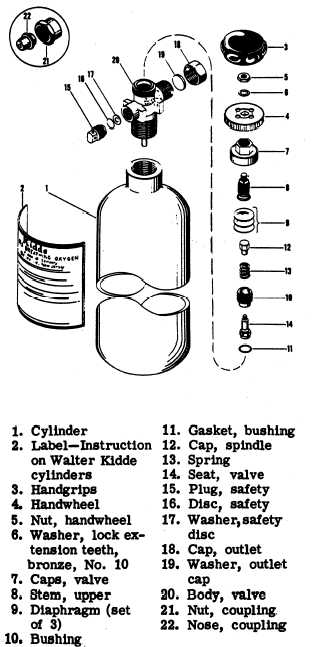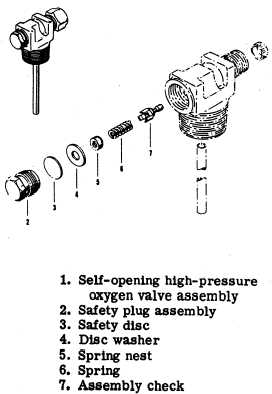4. A metering device (regulator) to control the
flow of oxygen to the user
5. A gauge(s) for indicating the oxygen
pressure
6. A mask to direct the oxygen to each user’s
respiratory system
Cylinders
Gaseous oxygen cylinders used in naval
aircraft systems are generally high-pressure,
nonshatterable cylinders. The term shatterproof
or nonshatterable indicates that the cylinder
is designed to resist shattering when punctured by
a foreign object, such as gunfire, at a pressure
of 1,800 psi. The resistance to shattering is
generally achieved by the use of a heat-treated
alloy or wire wrapping applied to the outside of
the cylinder. The two most common cylinder sizes
are 514 and 295 cubic inches.
The main advantage of the high-pressure
cylinder is that it minimizes space used for
storing gaseous oxygen. All high-pressure oxygen
cylinders are painted green in accordance
with the established color codes provided in
MIL-STD-101A.
Cylinders come equipped with either a man-
ually operated handwheel valve or an automatic
self-opening valve (figs. 4-1 and 4-2). Opening the
handwheel operated valve assembly releases the
contents of the cylinder. The handwheel has four
5/15-inch diameter holes for the attachment of
remote-operation equipment, if needed.
Figure 4-1.—Gaseous oxygen cylinder and handwheel valve
assembly.
Figure 4-2.—Self-opening oxygen cylinder valve.
4-5



